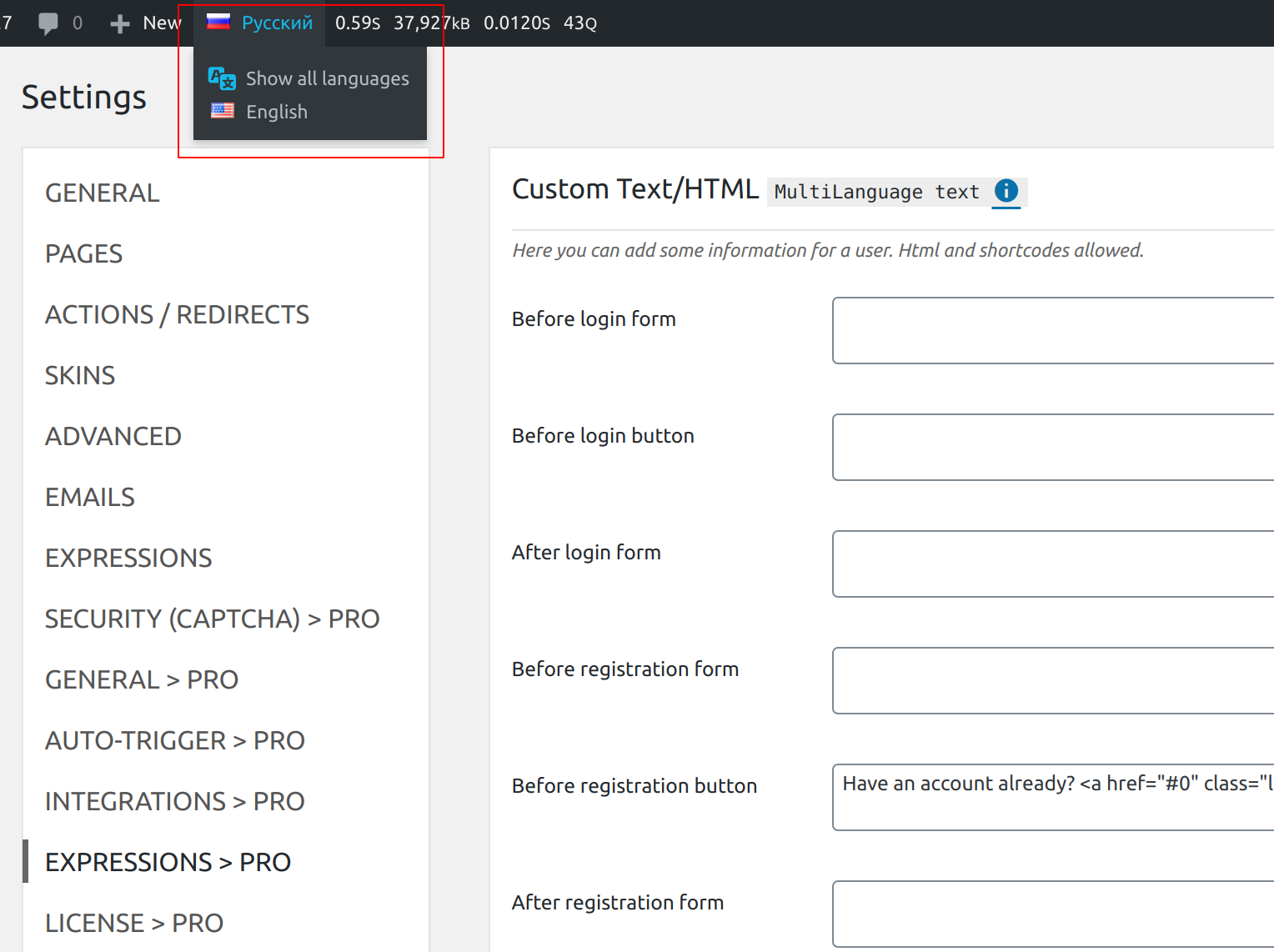

- Polylang language switcher how to#
- Polylang language switcher install#
- Polylang language switcher full#
- Polylang language switcher code#
- Polylang language switcher plus#
Now repeat the previous steps and create a menu for the target language. Under Menu Settings click in the Display location checkbox next to the Top Menu English. Click Add to menu to add the Language switcher to the Main Menu (English). You will see the Language switcher now available to be added to your Main Menu (English). At the top of the page, click Screen Options. Go to Appearance > Menus and create Main Menu (English) menu. You will display each menu to your multilingual WordPress site visitors with a language switcher. With your content now ready in both source and target languages, it’s a good time to create a menu for each language. Apply the same step to the rest of your dummy categories, and then to your pages and posts. Polylang language switcher plus#
Notice that the plus icon has been now replaced by a pencil icon. As the result, you can see this new source/target pairing of categories in your list of categories: Good job! You just translated your Category 1 category from English to your target language.
Type the Category 1 title translated into your target language in the Name field and click Add New Category at the bottom of the page. Apply the same step to your three dummy pages.Įxcellent! You are now ready to start translating your WordPress content. Your list of posts should now look similar to the one in the image below: Apply the same step to your three dummy posts. With all three dummy categories assigned to the source English language, your list of categories should now look similar to the one in the image below: Repeat this step for the two remaining categories: Category 2 and Category 3. This means that Category 1 has been assigned to your source English language. The checkmark is placed right under the English language flag. You will see that your dummy Category 1 now displays two icons under the language flags: Hence you see no icons under the languages’ flags: Take a notice that your categories don’t belong to any language at the moment. You just need to make one step to prepare it for translation. You are almost ready to start translating your dummy content. Now your Languages page should list both languages you just installed. Polylang language switcher install#
For the purpose of this tutorial, I’ll install Russian.
Repeat this step and install another required language. Scroll down and click on the Add new language button. You will be taken to the Languages screen. Install and activate the Polylang plugin:. Create three dummy posts inside the Category 1:. I will translate it from English to Russian. Create Dummy Contentįor the purpose of this tutorial, I install a fresh WordPress site. You finish the process by creating menus for both the source and the target languages, adding to each menu a language switcher. Next, you assign your content to the source language and translate it to the target language. You then install the Polylang plugin and use it to add required languages to your site. You create content you wish to translate. In this tutorial, you will learn how to use the Polylang plugin to create a multilingual WordPress site from scratch. 
Polylang language switcher how to#
Many thanks as always for any help/advice you can provide.One of our customers recently asked us how to set up a multilingual WordPress site to manually translate it. Can you advise how this could be achieved? (I haven’t added any CSS into this experiment as yet).
Polylang language switcher code#
I’ve added some code to test this possibility (pasted below) but the flags are displaying above my header image and the location I’d like them to be at is below the header image but above the main menu/navigation dropdown.
Polylang language switcher full#
I’ve been looking into this and can see that other people have experienced the same problem but I haven’t been able to find that anyone has posted a solution so I thought I’d ask -įirstly is there a planned fix for this? Otherwise, is there an easy way to force the responsive menus to display the images, or alternatively to customise them (but not the main menu in full width mode) to display text instead? Perhaps via a plugin?Īnother possibility I’m also looking at is coding the language switcher directly into my child theme’s functions.php. My understanding is that this is something to do with a Travelify custom menu walker not liking the fact that Polylang uses html code to display the flags. This works great in full width screen mode but when I change to tablet or mobile mode the responsive menus don’t display the flags - the dropdown instead only displays blank menu items. I placed the language switcher onto the main menu (with flags only - no text). I’ve recently updated my website to include a french version and have used Polylang for this. Hi there and thanks again for the great theme.






 0 kommentar(er)
0 kommentar(er)
